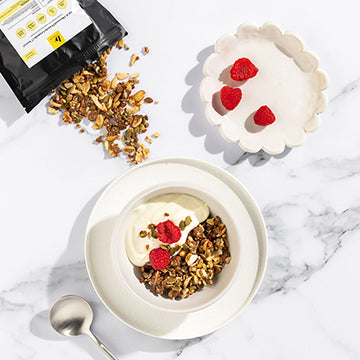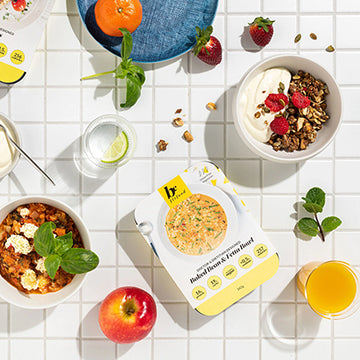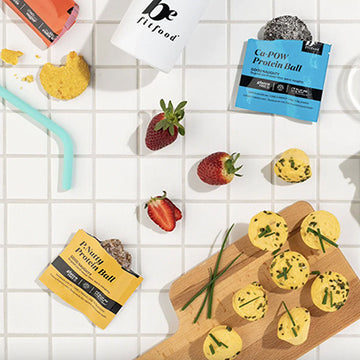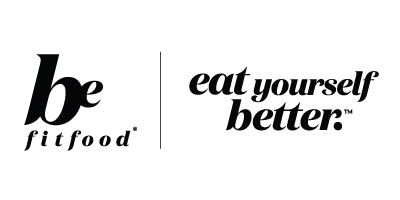When it comes to grocery shopping, it can be overwhelming trying to compare products and choose the healthiest option. To help you make informed decisions about your food purchases, we’ve put together this helpful little guide to help you understand and make the most out of food labels.
When it comes to reading food labels, there are three aspects to consider:
- The Nutrition Information Panel (or NIP)
- The ingredient list
- Product health claims.
Let’s explore each of these aspects in a little more detail…
Nutrition Information Panel
The Nutrition Information Panel, or NIP, is a table which outlines the numeric values of both macronutrients and micronutrients in the food product. The NIP always lists the energy, carbohydrate (total and sugars), protein, fat (total and saturated) and sodium content. It may also list a few other nutrients, such as fibre, however that is up to the independent food company, as it is not a legal requirement to list every nutrient.
There are always two columns for each of these nutrients. One lists the amount in ‘grams per serve’ of the product, and the other columns lists the nutrients in ‘grams per 100grams’ of the product. When you want to compare two products together, remember that the serving size will most likely differ. Use the quantity per 100g column to be able to compare two products side by side to decide which one to purchase.
To make it a little bit easier for you, we’ve created a quick guide:
Total fat:
Choose foods which contain less than 10g of fat per 100g. With dairy products, aim for less than 15g per 100g.
Saturated fat: Aim for foods with less than 3g per 100g.
Sugar: Choose foods with less than 15g per 100g. If looking at a breakfast cereal which contains dried fruit, you can aim for 20g per 100g (keep in mind that many products will contain natural sugars, like those found in dairy and fruit).
Fibre: Aim for more than 3g of fibre per 100g
Sodium: Aim for products with less than 400mg per 100g, however less than 120mg per 100g is best.
Quick Label reading guide:
| Compare packaged foods per 100g/ml | EXCELLENT | GOOD | |
| Total fat | Food | Less than 3g | 3- 10g |
| Drinks | Less than 1.5g | 1.5- 5g | |
| Saturated Fat | Food | Less than 1.5g | 1.5- 3g |
| Drinks | Less than 0.75g | 0.75- 1.5g | |
| Sugar | Food | Less than 5g | 5- 15g |
| Drinks | Less than 2.5g | 2.5- 7.5g | |
| Sodium (Salt) | Food | Less than 120mg | 120- 400mg |
| Drinks | Less than 120mg | 120- 400mg | |
* Also choose foods high in fibre (3g or more per serve) for added benefits
Ingredient List
The list of ingredients are always listed based on their weight. This means that the product’s ingredients are listed proportionally, so that the main ingredients are listed first. When trying to choose a product, always look at the first three ingredients listed. If one of the top three ingredients is sugar or salt, this might be an indication that this product is refined and might not be your best option nutritionally. Unfortunately, ingredient lists commonly use alternative names for ingredients such as sugar and salt.
Other names for sugar might include: glucose, fructose, sucrose, raw sugar, brown sugar, cane sugar, dextrose, golden syrup, maltodextrin, malt extract, rice malt syrup, honey or fruit juice concentrate.
Salt might be listed as: rock salt, sea salt, vegetable salt, sodium chloride, stock cubes or monosodium glutamate (MSG) or 621).
For example, have a look at the ingredient list below. The second ingredient is sugar, and if you look a little further, the fourth ingredient is high fructose corn syrup and the fifth is salt.
Health and Nutrition Claims
Lite: this could refer to the products colour, texture or taste, rather than the nutritional quality of the product
Reduced fat: this is simply comparing one product to a similar product made by the same manufacturer, where the ‘reduced fat’ product contains 25% less fat than the original. This may mean it still high.
Specific claims made about particular nutrients need to meet certain criteria, and may include claims such as “good source of calcium”, ”low in sodium” or “good source of fibre”. For example, for a product to claim that it is a ‘high in fibre’, it should contain more than 3g of fibre per 100g. To claim that a product is ‘low sodium’, it has to contain less than 120mg per 100g.
We hope this helps you to make more informed choices as you browse the grocery aisles!









